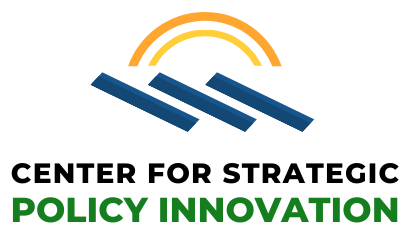Empowering Communities to Build Their Own Clean Energy Futures
The Center for Strategic Policy Innovation (CSPI) has developed a roadmap to accelerate local solar microgrid/resiliency projects.
Three major obstacles to most local solar microgrid/resiliency projects:
Massive amounts of solar PV energy can be produced locally, at or near the end-user (also known as “distributed” energy) – But three major obstacles exist which our training is designed to overcome:
#1: There is little know-how on how to target viable sites
#2: Local champions are often unaware of the vast buildout opportunities
#3: Lack of in-house feasibility/modeling capacity
The key is to first identify sites where solar buildout is financially viable.
Even with the new IRA tax credit incentives, only certain kinds of local solar energy projects are cost-effective to build without relying on grants or other cash infusions. This is because utilities won’t pay enough for the electricity generated by these smaller local projects to make them financially viable. (Utilities typically pay the same “wholesale” price per kWh for small local projects as they pay for large commercial scale projects built on hundreds of acres far outside of town – which of course have a significant economies of scale advantage over the smaller local projects).
The “workaround solution” for smaller local solar/resiliency projects is to target sites where solar power can be generated and used at the same site, serving as a means to offset the higher prices the utility company charges. These “behind-the-meter” projects (which are on the end-user’s own land and use solar PV systems to generate electricity that is used directly by the end-user, thus offsetting the need to buy expensive electricity at retail prices) are economically viable in most states across the country.
Local leaders are often unaware of the potential buildout capacity for critical local infrastructure from these behind-the-meter energy resiliency projects. Such projects typically include community resiliency centers, schools, hospitals, wastewater treatment plants, police, fire, government operations, schools, and other critical local infrastructure.
Local planners, engineers and community champions often don’t have in-house modeling capabilities to vision these projects even when they are aware of the associated clean energy and resiliency buildout potential.

Our Solution:
National Capacity-building Training Course
CSPI has developed a capacity-building national training course for cities, counties, tribal nations and community/environmental justice advocates across the country to be able to identify, model, and plan for the buildout of solar energy, battery storage, and microgrids for climate action and resiliency purposes throughout their communities.
In May 2023, the Center for Strategic Policy Innovation trained and graduated sixteen (16) clean energy/resiliency champions from across the U.S. – including one or more representatives of local government, critical infrastructure, native tribal nations, workforce training institutions, community-based organization (CBOs) and regional/national NGOs (including two trainees from Europe, doing projects in Africa). The personal instruction for this first-of-its-kind nationwide training program on REopt and SAM clean energy/resiliency modeling tools included a comprehensive, in-depth curriculum and personalized expert instruction for a hands-on (real-time) online training and certification through Arizona State University (ASU) and its Laboratory for Energy And Power Solutions (LEAPS), including instruction from NREL experts.
Beginning August/September 2024, CSPI will be offering an online, self-paced iteration of this same highly successful May 2-18 real-time NREL Modeling Tools Training Course.
Through this course, which continues to include support and participation from the Department of Energy’s National Renewable Energy Laboratory (NREL), graduates will learn how to identify a potential goldmine of economically viable, “behind-the-meter” low-hanging fruit solar and microgrid resiliency opportunities in your community, and to leverage NREL’s free REopt and SAM clean energy modeling tools to conduct site modeling and feasibility analyses for solar, battery storage and microgrid projects. Graduates (the Solar and Microgrid Resiliency Corps) learn how to:
Create in-house (city, county, tribal nation) clean energy resiliency expertise to advance a community's climate and resilience goals
Identify a goldmine of economically viable solar/microgrid opportunities in each community
Model and size solar and battery storage (using REopt modeling tool)
Explore cash flow analysis and financing options (using SAM modeling tool)
Be a catalyst for building "behind-the-meter" solar and microgrids for economic and community resiliency benefits
Build collaborations between cities, counties, school districts, tribal nations and community/environmental justice leaders


